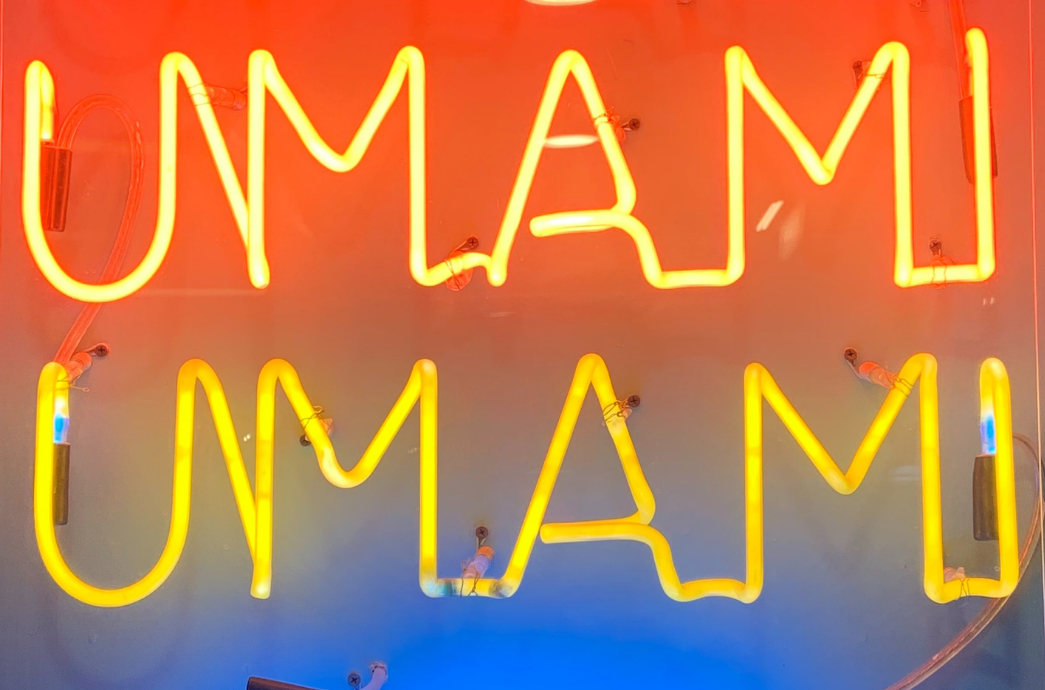
Once our fans figure out that oo’mämē is the phonetic spelling of umami, a relaxed look of knowing recognition spreads across their faces. But then…
What’s Umami? Again?
So glad you asked! The word umami comes from the Japanese word umai, roughly meaning deliciousness. Deliciousness, goodness, tastiness - all that and more. Known as the “Fifth Taste” along with sweet, sour, salty, and bitter, umami has the power to bind to taste receptors and give you that I-Want-Moreish quality. It is more magical than any singular component, having several distinct properties that bring the other four tastes into focus.
Umami spreads across the tongue activating all taste receptors and allowing a more intense experience of the other tastes. It also lingers. Salty and sour ingredients are a quick hit, but umami persists. Our oo’mämē is loaded with umami which is why you can get a flash of flavor memory, sometimes even the next day. For that, you can thank umami.
Umami also promotes salivation…literally, mouth-watering…without which we cannot taste or swallow. Umami is king. While the concept of umami has been in our lexicon for only a few decades, it has actually been around since the early 1900s when a Japanese chemist Kikunae Ikeda did a deep dive on the famous Japanese broth dashi, a stock of umami-packed ingredients. He discovered that one of the essential dashi ingredients, kombu – an edible seaweed, is rich in glutamic acid and that is what makes the magic.

What are Glutamates?
Glutamates are one of the three key components that make up umami. The unctuousness of umami is more pronounced when glutamates occur with two nucleotides: inosinate and guanylate. Together they are called the umami synergy. These are naturally occurring in foods and are common signals to the body that a protein has been consumed, which triggers a mouth-watering response to aid in digestion. If you geek out about umami as much as we do, you might want to check out the Umami Information Center. If you care about the flavor more than the science, read on!

What does Umami Taste Like?
Like beauty, it is in the eye, er - the tongue, of the beholder. Tastes are personal and vary from mouth to mouth. But umami has the same type of effect on us all. It amplifies other tastes that are present and magnifies a dish’s deliciousness, or umai. Just how delicious is a complex and personal formula that may depend on some olfactory cues (aroma), visual cues (color, shape, overall appearance), tactile cues (texture and temperature) and how you feel and memories you may have. Ever notice how “the best meal you ever had” coincides with an exceptional occasion, perfect weather, or being with someone special? Regardless of the many factors, you can be sure umami orchestrated the concert.

What Foods are Umami-Rich?
Umami makes a regular appearance in many foods. You can find umami in:
- Meat
- Fish
- Cheeses, such as Parmesan
- Vegetables, like tomatoes, shiitakes, and certain seaweeds

Aging, ripening, drying, caramelizing and fermentation all increase the umami factor found in foods. Asian cuisines rely heavily on umami as a taste balancer and amplifier by using soy sauce, fish sauce, dried fish products, kombu seaweed, and fermented black beans.
Our oo’mämē Chile Crisp Collection relies only on vegetable products, deriving its umami from fermented black beans and our Umami Heat, the Japanese-style Shichimi Togarashi dry spice blend, relies on tidbits of the Japanese seaweed, Nori. In addition to umami, there are chiles from the local regions, crunchy nuts, seeds and spices, and a chewy fruity or slightly sweet tidbit. Just when you recognize one flavor on one part of your tongue, another raises its hand – with both texture and taste. The combinations – and experiences - are limitless and enhanced by the presence of umami.
You know umami is having its moment when it makes it into a Saturday Night Live sketch!! Adam Driver’s umami definitely has that I-Want-Moreish quality!!


Comments (0)
Back to Umami